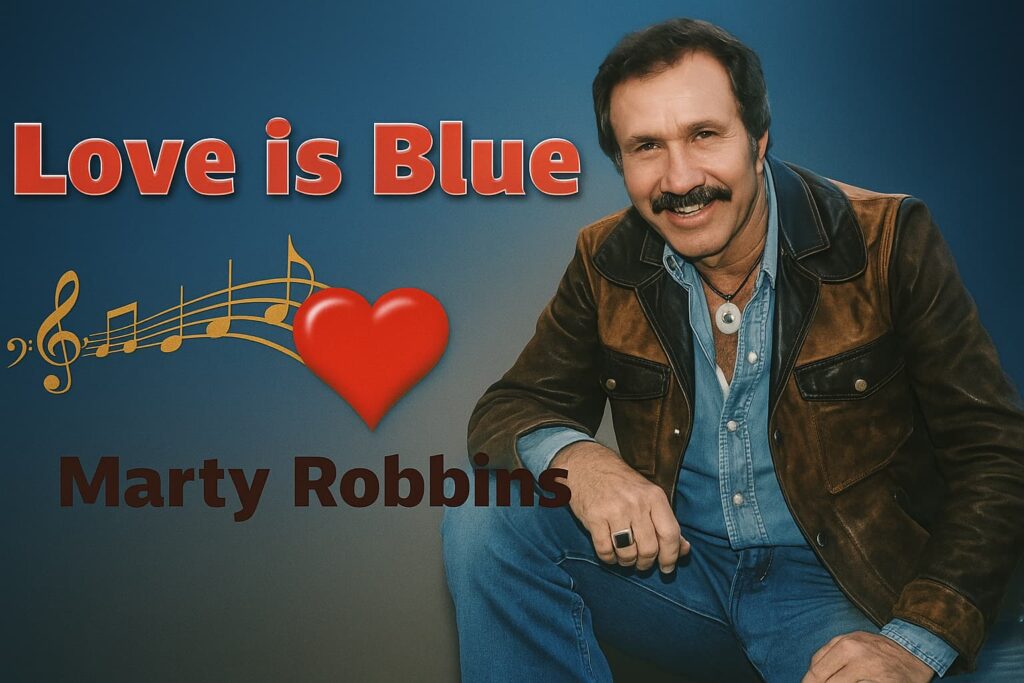
Love’s Fickle Hue: A Timeless Reflection on Romance’s Fleeting Nature
Back in the late 1960s, the airwaves were a tapestry of sound, weaving together psychedelic rock, Motown’s soulful grooves, and the smooth, storytelling melodies of country music. Amidst this vibrant sonic landscape, a song emerged that, while rooted in a different tradition, managed to capture the hearts and minds of a global audience. The year was 1968, and the song was “Love Is Blue”. While many might associate this iconic instrumental with the French orchestra leader Paul Mauriat, it was the legendary country music artist Marty Robbins who brought a vocal interpretation to the American charts. His version, a tender and heartfelt ballad, reached a respectable No. 71 on the Billboard Hot Country Singles chart, a testament to his enduring popularity and his ability to transcend genre boundaries.
The story behind “Love Is Blue” is a fascinating one, a journey that began in Europe before finding its way to the American consciousness. The melody was originally composed by André Popp with lyrics by Pierre Cour for the 1967 Eurovision Song Contest. It was performed by Vicky Leandros for Luxembourg and became an international hit. The song’s success, however, truly exploded a year later when Paul Mauriat and his orchestra released their instrumental version. Their lush, orchestral arrangement, featuring a prominent harpsichord and soaring strings, became a worldwide phenomenon, reaching the coveted No. 1 spot on the Billboard Hot 100 chart in the United States. This instrumental version, with its wistful and romantic feel, became the soundtrack for countless memories—first dances, slow moments under the stars, and quiet evenings spent in contemplation.
Then came Marty Robbins, a man with a voice as smooth as polished wood and a knack for telling stories through song. Known for his classic hits like “El Paso” and “A White Sport Coat (and a Pink Carnation)”, Robbins had a unique gift for inhabiting the characters in his music, making their joys and sorrows his own. When he decided to record his own version of “Love Is Blue”, he brought his signature style to the table. He didn’t just sing the words; he inhabited them, his voice a gentle caress, a soft sigh of remembrance. The lyrics, written in English by Bryan Blackburn, perfectly suited Robbins’ introspective style. They paint a picture of love’s beautiful but often fleeting nature, a kaleidoscope of emotions that shifts and changes like the seasons.
The song’s meaning, especially in Marty Robbins’ hands, is a poignant exploration of the duality of love. The lyrics describe love’s many colors, its vibrant and joyous hues alongside its darker, more somber shades. “Love is blue, like the ocean,” the song begins, a simple yet powerful metaphor that evokes both the endless depths and the turbulent storms of a relationship. It moves from the joyful “red, like a rose” and the hopeful “green, like the grass” to the bittersweet “grey, like a cloud,” each color representing a different phase of love’s journey. It speaks to the universal experience of falling in love, cherishing the beautiful moments, and then, inevitably, facing the pain of its end. Robbins’ heartfelt delivery gives the song a deeply personal and nostalgic feel, making it a song for anyone who has ever loved and lost. It is a reminder that even when love fades, its memory lingers, a beautiful ghost in the tapestry of our lives. His rendition, a gentle whisper of a song, stands as a testament to the fact that some emotions are best expressed with a quiet grace, a reflective tenderness that speaks volumes without ever raising its voice. It’s a song for the quiet moments, a musical companion for a long drive, or a late night spent thinking back on a time when love was everything.